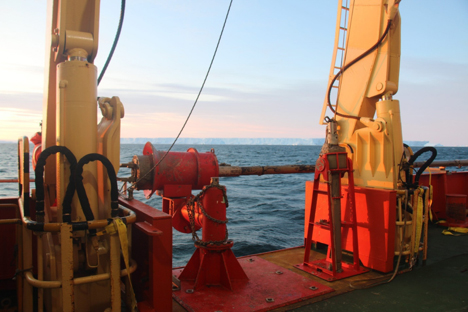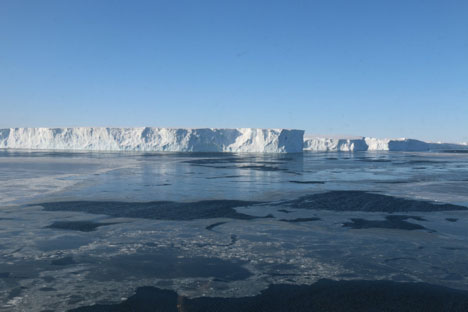Frank-Oliver Nitsche
Lamont-Doherty Earth Observatory of Columbia University, NY, U.S.A
The Thwaites Glacier has been recognized as a critical point in the West Antarctic Ice Sheet stability. In 2018 the US National Science Foundation (NSF) and UK Natural Environment Research Council (NERC) jointly funded the International Thwaites Glacier Collaboration (ITGC), which is a five-year initiative to improve glaciological and geological understanding of the Thwaites Glacier. The ITGC included two scientific cruises (NBP1902 and NBP2002) conducted in 2019 and 2020 respectively. Besides oceanographic work these cruises included significant bathymetric mapping, sediment coring and multi-channel data collection offshore Thwaites and Pine Island Glacier on the Amundsen Sea continental shelf.

Photo credit F. Nitche
The ice conditions during the NBP1902 cruise allowed work in an extensive area close to the Thwaites Glacier that had never previously been accessible to research ships. Whereas NBP2002 the ice conditions were less favorable and work concentrated on potential pinning points.
The focus on the ongoing analysis of the combined data from these two expeditions will provide new insights regarding the history of retreat, meltwater release, warm water intrusion, and the role of pinning points for the Thwaites Glacier. In addition, we were able to map previously unmapped seafloor in front of the neighboring Pine Island Glacier that became accessible after recent ice shelf break-up.

Photo credit F. Nitche


